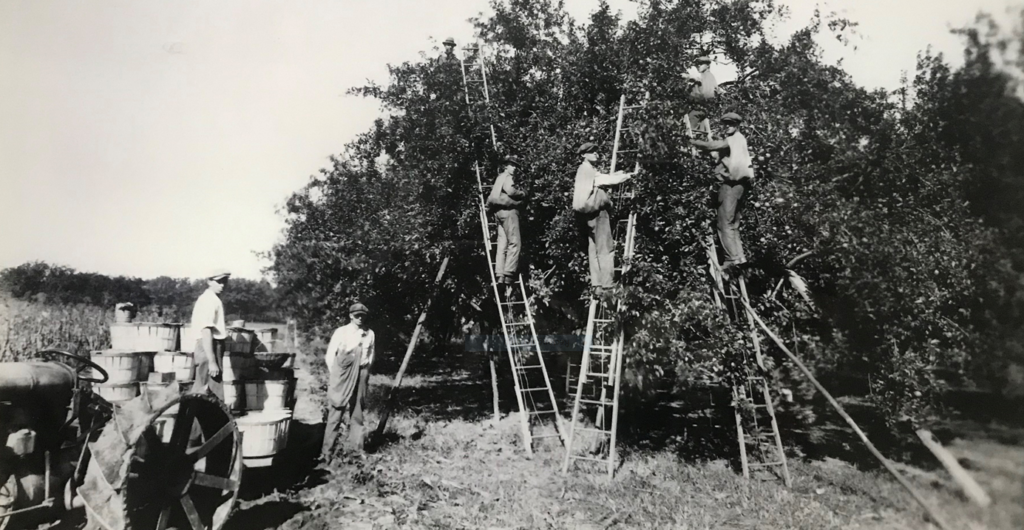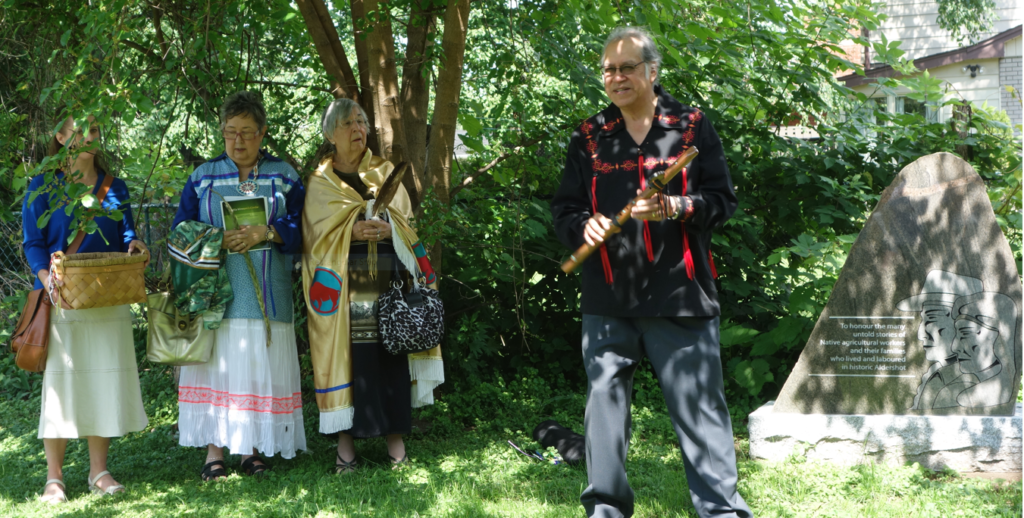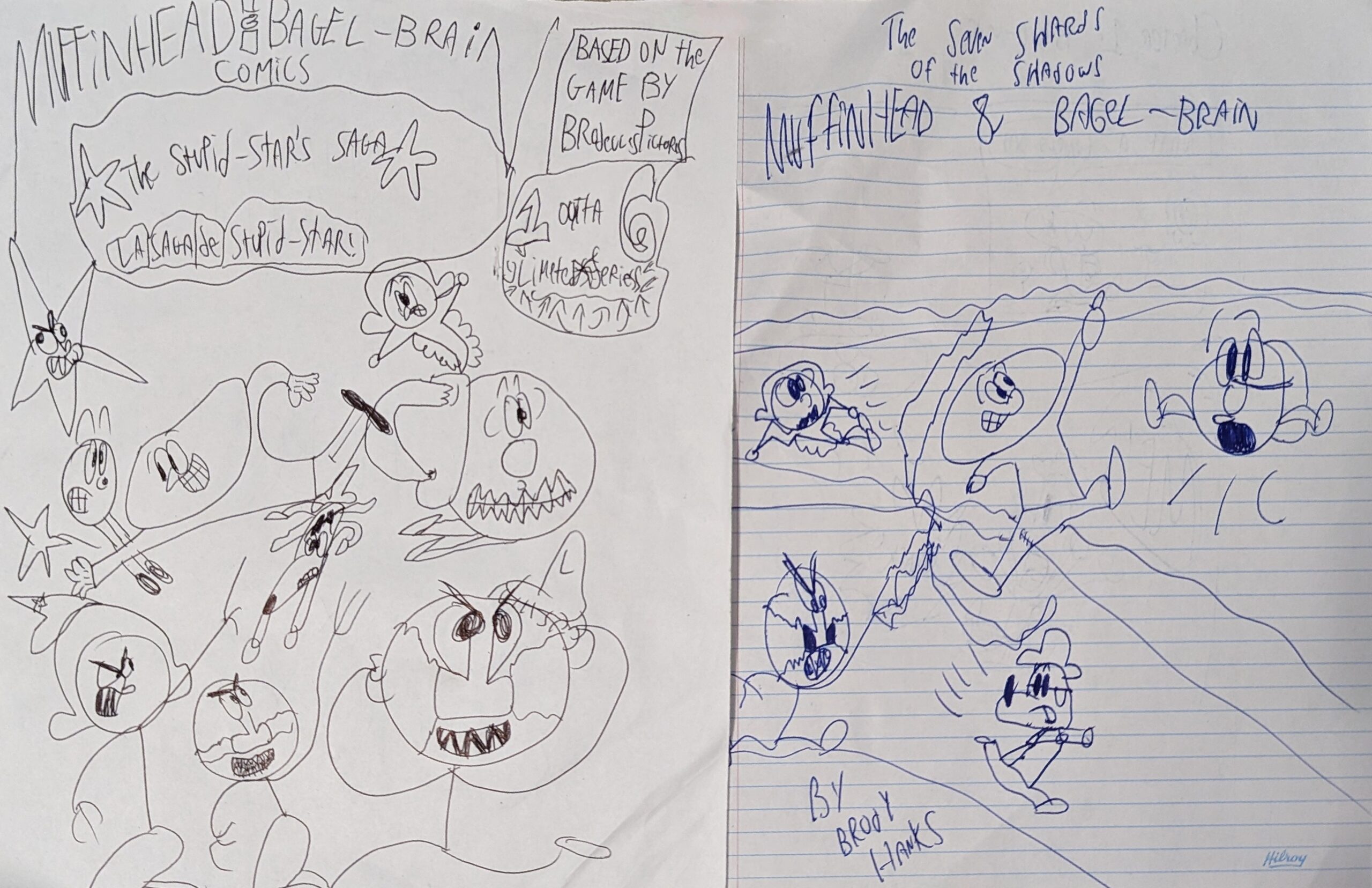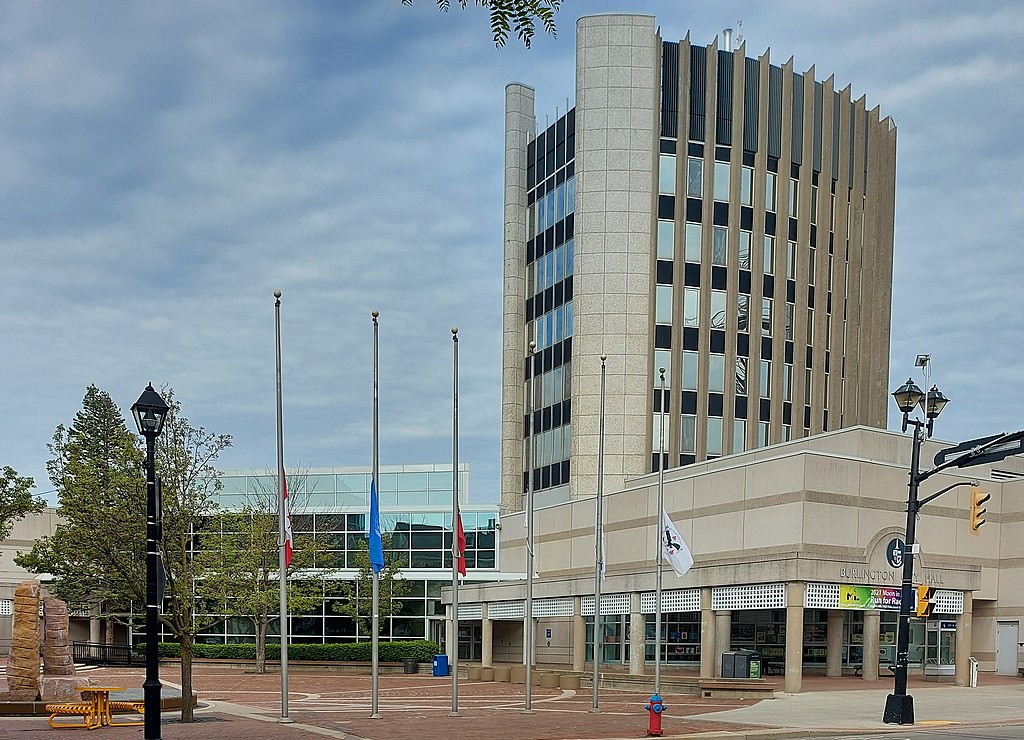The observance of the National Day for Truth and Reconciliation this week may serve to remind Aldershot residents of the contributions made to their community by Indigenous people. In fact, a monument saluting their work has existed on the property of East Plains United Church since 2015.
The inscription reads: “To honour the many untold stories of Native agricultural workers and their families who lived and laboured in historic Aldershot.”
During the 1930s and 1940s, Indigenous people flocked to Aldershot to fill the labour gap that existed before and after the war.
“The farms couldn’t have operated without them. They were essential,” recalled 93-year-old Reg Bullock, whose family owned farms along both sides of Plains Road near Falcon Boulevard.
“Their contribution, while not recognized by the community, was a significant one. Without those workers, I’m not sure how successful the farms would have been or if their profitability or size would have been maintained,” remarked Lynn Nicholson from the Métis Women’s Circle.

The Indigenous workers came to Aldershot primarily from the Six Nations reserve, but also from as far away as Wiikwemkoong Unceded Territory (on Manitoulin Island) and the Wahta Mohawk Territory (near Bala) in northern Ontario. There were hundreds of workers during the harvest season, when Aldershot was known as the fruit basket of Ontario. Some were day-workers, some were seasonal, and some remained for the entire year. Eventually, a few became permanent residents.
They lived in humble circumstances while working in Aldershot, usually in tool sheds, basket barns, outbuildings, and modest cabins. Locals sometimes called the dwellings “Indian shacks;” today, this is considered a perjorative.
Although considered farm labourers, some were highly-skilled agriculture workers who were sought after by local farmers.
“They were good at working the soil, plowing, discing, cultivating with horses. They were particularly good at handling horses,” Mr. Bullock remembered during an interview.
The number of Indigenous workers in Aldershot eventually declined in the 1950s as farms became more mechanized or were sold to developers.
The effort to remember and honour the workers started after Bob Job, the graveyard caretaker at East Plains United Church, identified several Indigenous graves along the church’s rear fence line.
A team of people dedicated to social justice subsequently became involved. It included church volunteers, representatives from the Métis Women’s Circle, historians Jane Irwin and Pauline Grondin, along with others. Assisted by a Trillium grant, they researched the history of Indigenous workers in Aldershot in an effort later described as: “multi-faceted and took several years to coordinate,” including many interviews with local farmers.
Two years later their work revealed important history. “The stories of these workers are seldom told and not generally recorded in the pages of history, yet their roles were vital to Canadian farms, including those in Aldershot,” according to Nicholson, who was the project coordinator for the Métis Women’s Circle.

The research and the monument led to publication of a children’s book titled Baskets and Berries, Aboriginal Contributions to Aldershot’s Agricultural History. It tells the story of a 1947-era Indigenous farm woman in Aldershot. That story was then turned into a one-woman play performed by award-winning Aldershot historian and story-teller Pauline Grondin.

“They never bruise or damage anything. Their skill and expertise is part of their traditional lifestyle and it’s also a family affair. They’re out there at four in the morning, children and adults, side-by-side, picking fruit before dawn. They especially honour the strawberry and have a special celebration giving thanks to the strawberry being the first fruit of the season,” says Grondin’s Indigenous character during the play.
“




